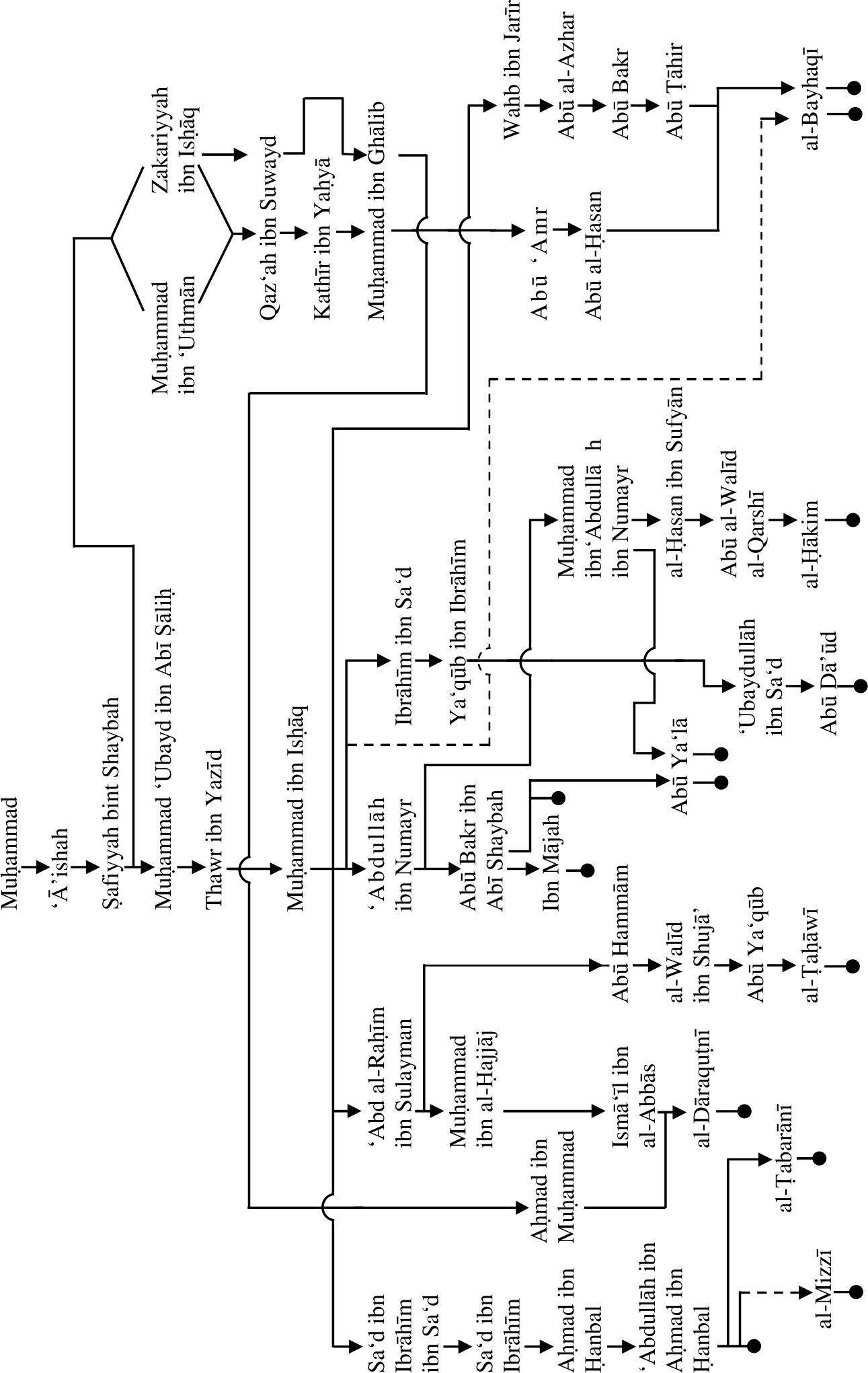حَدَّثَنَا اَبُو بَكْرِ بْنُ اَبِي
شَيْبَةَ حَدَّثَنَا عَبْد اللّٰهِ بْنُ نُمَيْرٍ عَنْ مُحَمَّدِ بْنِ اِسْحَاقَ
عَنْ ثَوْرٍ عَنْ عُبَيْدِ بْنِ اَبِي صَالِحٍ عَنْ صَفِيَّةَ بِنْتِ شَيْبَةَ
قَالَتْ حَدَّثَتْنِي عَائِشَةُ اَنَّ رَسُوْلَ اللّٰهِ صَلَّي اللّٰهُ عَلَيْهِ
وَسَلَّمَ قَالَ لَا طَلَاقَ وَلَا عَتَاقَ فِي اِغْلَاقٍ
‘A’ishah reported that God’s Messenger (sws) said: “Divorce
and liberation of slaves does not take place by ighlaq.”
Following is the schematic illustration of the isnad of this
narratives’ variants:

It is specified
by authorities that ‘Ubayd ibn Abi Salih is actually Muhammad ibn ‘Ubaydullah
ibn Abi Salih.
According to Ibn Hajar, he is da‘if.
Al-Mizzi records that while Ibn Hibban regards him to be trustworthy, Abu Hatim
calls him da‘if al-hadith.
Al-Mizzi
records the following jarh Muhammad ibn Ishaq:
In the opinion of ‘Abdullah ibn Ahmad ibn Hanbal, he is laysa
bi hujjah. Ahmad ibn Abi Khaythamah says that he heard Yahya ibn Ma‘in say:
laysa bihi ba’s. When he was asked a second time, he said: laysa bi dhaka and is
da‘if. Ahmad ibn Abi Khaythamah says that when he asked Yahya ibn Ma‘in about
him at another instance, he replied: ‘indi saqim laysa bi al-qawi. Al-Nasa’i
says: laysa bi al-qawi.
Al-Dhahabi
records that Yahya ibn Sa‘id al-Qattan bore witness that Muhammad ibn Ishaq is a
liar.
Following is the jarh recorded by al-Mizzi
on Qaz‘ah ibn Suwayd ibn Hujayr: Ahmad ibn Hanbal regards him to be mudtrib al-hadith;
two conflicting opinions are recorded about him from Yahya ibn Ma‘in: da‘if and
thiqah; Abu Hatim says that he is laysa bi dhak al-qawi mahalluhu al-sidq wa
laysa bi al-matin yuktabu hadithuhu wa la yuhtajju bihi; al-Bukhari says that he
is laysa bi dhak al-qawi; Abu Da’ud, al-‘Abbas al-‘Anbari and al-Nasa’i regard
him to be da‘if.
Ibn Hibban says that he is kathir al-khata’ fahish al-wahm
and when these blemishes plagued his narratives, he was rejected from being
adduced from.
Ibn Hajar records: al-Bazzar says that he is lam yakun bi qawi and that Ahmad’s
opinion about him reported by al-Athram is that he is close to being matruk.
___________
|